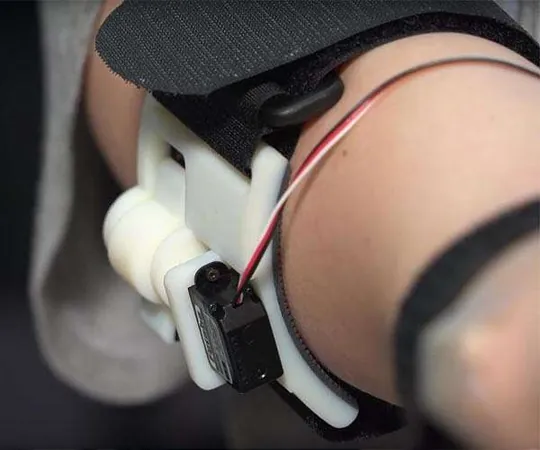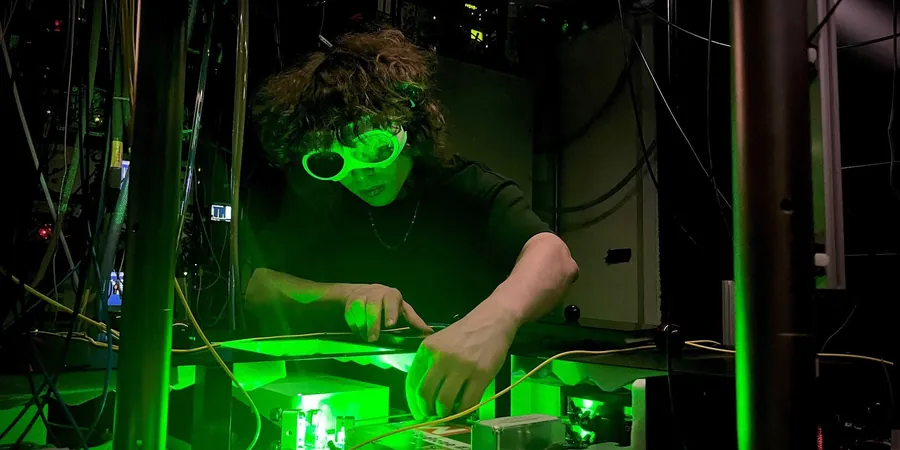
Groundbreaking Prosthetic Tests in Space: A Leap Towards Inclusive Space Exploration
2025-05-28
Author: William
Historic First: Prosthetics in Microgravity!
In an unprecedented development for space medicine, a lower limb prosthesis has been rigorously tested in microgravity, thanks to the European Space Agency's (ESA) latest parabolic flight campaign aboard the innovative 'Zero G' aircraft.
Astronaut John McFall Takes Center Stage
ESA astronaut reserve John McFall, who is a through-knee amputee, showcased remarkable resilience as he maneuvered with his prosthetic leg during a series of activities, including squats, walking, and even running, across over 90 parabolas during three exhilarating flights. Each parabola offered 22 seconds of microgravity, mimicking conditions aboard the International Space Station (ISS).
The Fly! Initiative: Bridging Gaps in Space Exploration
Kicking off on May 21, 2025, from Bordeaux, France, these pioneering test flights were part of ESA's 86th parabolic flight campaign. McFall’s participation as a subject matter expert was crucial in the Fly! initiative, which aims to dismantle the barriers that have historically prevented lower limb amputees from joining longer space missions.
Innovative Prosthetic Design Meets Microgravity Challenges
Equipped with a cutting-edge mechatronic "smart" knee and multiple interchangeable components designed for both everyday use and athletic performance, McFall’s prosthesis features gravity-dependent sensors. The research team introduced the Ampu-T2 experiment to assess how this advanced hardware functioned in the unique weightlessness of space.
Collaboration and Testing in Action
In a groundbreaking partnership with orthopedic tech giant Ottobock, researchers focused on collecting and fine-tuning performance data. Initial tests revolved around standing and walking, while subsequent flights delved into running with variations in blade stiffness and knee resistance. A sophisticated harness combined with elastic cords aimed to replicate the load forces astronauts experience on treadmills aboard the ISS.
Implications Beyond the Stars
The outcomes from these tests are set to define the ideal prosthesis configuration for astronauts, ensuring they can effectively perform daily tasks on the ISS. Beyond the technical aspects, this research has significant health implications: on Earth, walking promotes bone density, yet astronauts in space face rapid bone and muscle degeneration. Equipment like treadmills and resistance devices help combat these challenges, and McFall’s groundbreaking experiments could pave the way for specially tailored training protocols for prosthesis users, keeping them fit during and post-mission.
A Commitment to Diversity in Space Exploration
The Fly! initiative stands as a testament to ESA’s unwavering dedication to fostering inclusive space exploration, paving the way for a future where diverse astronaut crews can thrive among the stars.









 Brasil (PT)
Brasil (PT)
 Canada (EN)
Canada (EN)
 Chile (ES)
Chile (ES)
 Česko (CS)
Česko (CS)
 대한민국 (KO)
대한민국 (KO)
 España (ES)
España (ES)
 France (FR)
France (FR)
 Hong Kong (EN)
Hong Kong (EN)
 Italia (IT)
Italia (IT)
 日本 (JA)
日本 (JA)
 Magyarország (HU)
Magyarország (HU)
 Norge (NO)
Norge (NO)
 Polska (PL)
Polska (PL)
 Schweiz (DE)
Schweiz (DE)
 Singapore (EN)
Singapore (EN)
 Sverige (SV)
Sverige (SV)
 Suomi (FI)
Suomi (FI)
 Türkiye (TR)
Türkiye (TR)
 الإمارات العربية المتحدة (AR)
الإمارات العربية المتحدة (AR)